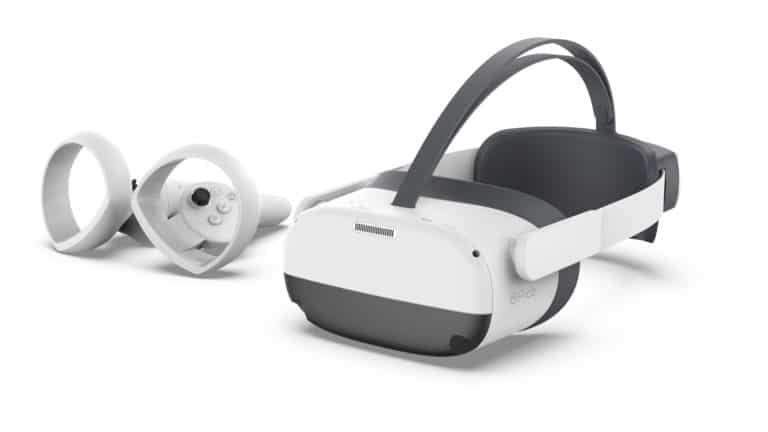
There’s no question that VR has evolved since its earliest days. According to the Franklin Institute, today’s VR technology was built upon ideas dating back to the 1800s, ever since the beginning of practical photography.
The VR market is estimated to reach $22 billion by 2025 according to ARtillery Intelligence, whether that means more businesses adopt these immersive technologies or they become the next big thing for consumers.
Additionally, as the metaverse gradually becomes mainstream, these technologies will likely be the catalyst for people interacting with each other in digital environments. How important will it be for major tech companies to create wireless (a.k.a., untethered) VR headsets?
Here is more information about VR and why its future will likely need to be wireless.
What Is Wireless VR?
Several leading VR headsets released over the past five years, such as the Oculus Rift and HTC Vive, relied on a tether to relay power and high fidelity imagery to the headset at fast speeds. However, many consumers would agree that a dangling cable from a VR headset can take away from the overall immersive experience.
Original VR headsets were often bulky, heavy, low-resolution, and had limited tracking and responsiveness, especially when the technology was in its infancy. Consumers using VR headsets noticed this. Now, major tech companies are looking to make modern VR headsets more lightweight, comfortable and portable.
VR cords and wires are more of a nuisance than anything else. Still, they could be potentially dangerous if a user is unaware of the wire’s location while immersed in a VR simulation. It’s expected within the next decade that most VR headsets will be wireless and won’t require a direct connection to a PC.
For example, Meta focuses its efforts on creating a truly wireless VR headset for standalone operation – the much-vaunted Quest 2.
Wired vs. Wireless VR Headsets
Wireless headsets have the advantage of being portable. Users can pop on a wireless VR headset and move about without fear they’ll trip over a cable. The Meta Quest 2 and Oculus Go (discontinued) make setup extremely easy because the systems have built-in processing. The Meta Quest 2 uses a system-on-a-chip (SoC) for its onboard processing.
Other headsets, including the HTC Vive Pro, are compatible with HTC’s wireless adapter, which removes the need for cables. However, depending on the generation of the sensors in these headsets, users may be limited.
The primary benefit of wireless VR headsets is granting users the freedom to move around their environment. However, they may need to sacrifice battery life. For example, the Oculus Quest 2 lasts for about two to three hours, depending on its use.
As of now, wired VR headsets usually outperform their wireless counterparts. Wired headsets still offer immersive experiences and can be leveraged by businesses. Consider how VR can treat phobias or PTSD in therapy sessions. More use cases will likely emerge as VR technology advances. A wireless VR future looks promising, but the technology is not yet there to support all use cases.
Challenges in Creating a Wireless VR Headset
In an interview with ZDNet, Meta CEO Mark Zuckerberg says creating wireless AR/VR glasses or headsets will be “one of the hardest technical challenges of the decade.” Creating exceptional, immersive experiences for customers by delivering wireless VR solutions is no simple feat.
VR manufacturers and developers will need to overcome challenges to bring wireless VR headsets to the market. One major issue is finding a solution to allow standalone headsets to process data and deliver high-resolution visuals.
Researchers from the Computer Science and Artificial Intelligence (CSAIL) at the Massachusetts Institute of Technology (MIT) unveiled a prototype system, coined “MoVR,” which enables gamers to use a range of VR headsets wirelessly.
Standalone headsets require inside-out positional tracking, which needs more components and computations. This can add to the product’s weight and cost and present new ergonomic challenges.
Most of today’s systems can’t sustain data rates of more than 6 GBPS while the VR user is moving, turning and interacting with the virtual world. However, the engineering disciplines are set for significant growth in the future (not to mention the money Meta is spending in its Reality Labs division). More research can help tech companies optimize wireless VR headsets.
Because the VR/AR market will expand, it’ll be crucial for major tech companies to recruit from top talent pools to support their VR headset development efforts. According to GE, innovative graphic cards and advancements in processor chips will alter VR headsets and how they’re manufactured.
Hopefully, it won’t be too long until wireless VR headsets become mainstream. Developers will first need to address some challenges in creating the optimal experience while considering the end-user and applicability to enterprises.
Wireless Headsets: Building the Future of VR
There are many types of VR headsets out there. They can be tethered or untethered, and all vary in features and functionality.
Advancements in the VR world have helped further consumer adoption, but more improvements can be made to drive demand and make VR headsets perform better. Expect more tech companies to focus on building wireless products to appeal to the masses.
 April Miller is a senior writer at ReHack Magazine and editorial contributor at AR Insider. She specializes in VR/AR, IoT, and business technology. See her work here and follow her @rehackmagazine.
April Miller is a senior writer at ReHack Magazine and editorial contributor at AR Insider. She specializes in VR/AR, IoT, and business technology. See her work here and follow her @rehackmagazine.

